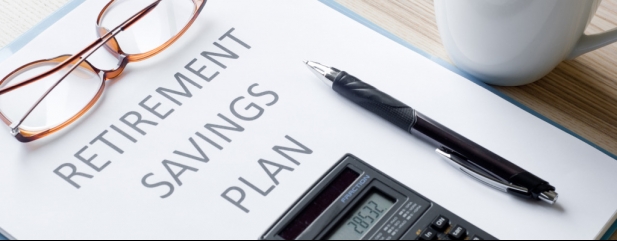Archived article
Please note that tax, investment, pension and ISA rules can change and the information and any views contained in this article may now be inaccurate.
How to invest as you approach retirement

A working life is spent building up a retirement pot, and a retired life is built on spending it. So far, so good, but while the subjects of accumulating a pension and drawing on it are relatively well trodden, less attention is placed on a smaller, but nonetheless significant period in the final approach to retirement.
Your pension is probably nearing its peak value at this stage, so there’s a lot at stake. Meanwhile, your appetite for risk is likely to be shifting down a gear or two, as the time before you draw on your pension diminishes, which in turn limits your chances of recovering from any nasty stock market tumbles.
The trick to managing this potentially hazardous transition between working and retirement, is to start with the ending, and decide how you are going to draw on your pension, because ultimately that will determine the best investment strategy in your retirement runway.
THE OLD PATH
Before pension freedoms were introduced in 2015, investors had fewer options when it came to drawing on their defined contribution pension. Most took out an annuity, which made pre-retirement investment strategy a bit simpler.
Annuity income is generally fixed for life once you buy it. Annuity rates are based on bond yields, and so you can hedge the risk of converting your pension pot into a retirement income by buying bonds.
If bond prices fall, bond yields go up, and so do annuity rates, offsetting the fall you will see in the value of the bonds in your pension pot. Conversely if bond prices rise, yields and annuity rates will fall, but you would be compensated for this by a higher value of the bonds in your pension.
WHAT ABOUT NOW?
In the current environment, pension savers planning on buying an annuity might choose to build up cash instead of bonds, given the likelihood that interest rates are going to rise over the next three to five years. This does make some sense, but this strategy becomes unstuck if interest rates fall.
In that scenario, annuity rates would also be cut, and you’d have no bonds in your pension going up in value at the same time, just cash, so you’d end up with less pension income.
It does seem unlikely that rates could fall further from current levels, particularly with the global economy staging a recovery. But then, we all thought that when the UK base rate was cut to its ‘emergency’ level of 0.5% in 2009. It now stands at just 0.1%.
WHAT IF I WANT TO TAKE OUT CHUNKS OF CASH AT RETIREMENT?
Many people aren’t buying annuities now as the pension freedoms have delivered more flexible alternatives. Some people simply take their pot out as cash in one big chunk or a couple of smaller chunks when they retire.
This doesn’t make a huge amount of sense if you want your pension to pay a sustainable long-term income, or to minimise tax, but nonetheless it is a route some people go down.
If this is what you’re planning, in the five years or so prior to drawing your pension, you should consider gradually selling out of investments and raising cash levels inside your pension pot, so you don’t open yourself up to a large fall in the value of your pension just as you’re about to liquidate it.
KEEPING YOUR PENSION INVESTED
Rather than take it out as one lump, a more sensible approach taken by many pension savers is keeping the pension invested after retirement and drawing an income from it. This clearly lessens the need to jettison longer term, riskier pension investments, but doesn’t eliminate it.
Investors in this situation might consider what their portfolio is going to look like at retirement and think about gradually shifting their existing investments. This leads to a smoother shift from growth towards income producing assets, and allows investors to dial down risk gradually, if they wish to.
For instance, this strategy might mean switching from a global growth portfolio towards an equity income portfolio, perhaps with some less volatile multi-asset funds included to provide some ballast.
Again, a five-year runway for this process is reasonable, as it gives you enough time to transition your portfolio, and retirement is close enough you probably have a good idea when it’s going to happen. You can adjust this time frame depending on your individual circumstances.
OTHER CONSIDERATIONS
Whichever route you choose to draw on your defined contribution pension, it’s likely you’ll want to build up at least some cash in your pension by selling investments in the retirement runway. That’s because most people take their 25% tax free cash at retirement, for obvious reasons.
To limit the risk of a big fall in the market just as you’re about to encash investments to fund this withdrawal, you probably want to build this cash up incrementally. As with any investment strategy, you can adjust your retirement runway plans depending on market conditions, selling more when markets are high and less when they’re low.
But to tactically deviate from a game plan, you need to have one in the first place. It’s therefore a good idea to review your pension at least five years before your planned retirement date, to consider your investment strategy, and to make sure your pension is on track to provide you with a comfortable retirement income.
Important information:
These articles are provided by Shares magazine which is published by AJ Bell Media, a part of AJ Bell. Shares is not written by AJ Bell.
Shares is provided for your general information and use and is not a personal recommendation to invest. It is not intended to be relied upon by you in making or not making any investment decisions. The investments referred to in these articles will not be suitable for all investors. If in doubt please seek appropriate independent financial advice.
Investors acting on the information in these articles do so at their own risk and AJ Bell Media and its staff do not accept liability for losses suffered by investors as a result of their investment decisions.

 magazine
magazine








